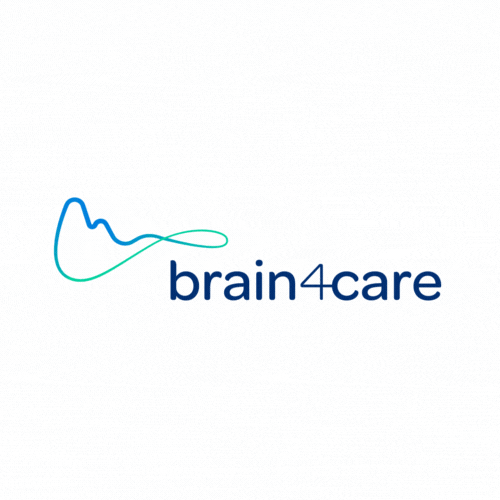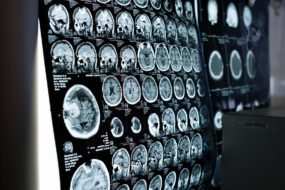
Covid-19 causes an increase in the blood concentration of D-dimer, one of the products of fibrin degradation, a protein involved in clot formation
A clinical study completed in June 2021 found that patients diagnosed with Covid-19 appear to be particularly susceptible to developing neurological complications in addition to loss of smell and taste. The research was authored by the neurosurgeon Simão Lunière Gonçalves, from the General Hospital of Roraima, the Coronel Mota Hospital and the Oncology Center of Roraima, and was carried out in partnership with Joana de Sousa Resende and Ianara Fernanda de Lima Mendes, medical students at the Federal University of Roraima.
In academic research, the clinical case of a patient diagnosed with Covid-19 who evolved with ischemic cerebrovascular accident (CVA) was reported, without presenting any other risk factor for developing a neurological insult. “The formation of a clot inside the artery as a result of viral infection is the most likely factor to have caused this ischemic stroke”, observes neurosurgeon Lunière, graduated in 2010 and with residency in neurosurgery completed in 2016 at Getúlio Vargas Hospital, in Manaus ( AM).

Clues in the blood
Another indicator revealed by the study, as highlighted by Lunière, is an elevated volume of D-Dimer in the blood, which is also related to an increased risk of thrombosis and an unfavorable prognosis in patients diagnosed with Covid-19. D-Dimer is one of the breakdown products of fibrin, a protein involved in clot formation. “Other articles already relate it to the pulmonary thrombus, but the novelty of the study was to correlate the D-Dimer with the stroke”, states the neurosurgeon.
The definitive relationship between Covid-19 and the occurrence of stroke has not yet been determined. As the researcher states, “further studies are needed to complement the current ones”. The ideal, according to Lunière, is that every patient diagnosed with Covid-19 takes an exam to check the level of D-dimer in the bloodstream, so if there is an elevation, appropriate treatment should be followed to reduce the likelihood of the onset of stroke.
“The treatment against COVID-19 is the same for all age groups, but the population must pay attention to the initial flu-like symptoms to exclude the possibility of Covid and its possible complications, such as stroke”, emphasizes Lunière. According to him, SARS-CoV-2 can infect almost all organs and the typical symptoms of Covid-19 are, at first, fever, dry cough, myalgia and dyspnea, and some patients may report headache, dizziness, diarrhea, nausea and vomiting, in addition to loss of smell and taste.
Clinical case
The research carried out is the subject of the paper “Ischemic cerebrovascular accident as a consequence of COVID-19 infection: a case report”. The study was published in the Jornal Brasileiro de Neurocirurgia [Brazilian Journal of Neurosurgery] , the oldest scientific journal on neurosurgery in our country, created in 1973, under the name of Seara Médica Neurocirúrgica.
The paper reveals the evolution and clinical aspects of a male patient, admitted to a public hospital in the city of Boa Vista, Roraima (RR), on July 2, 2020. He is brown-skinned, 32 years old, non-alcoholic, non-smoker and denied allergies, that is, without previous risk factors for the development of the neurological condition. However, he was diagnosed with ischemic stroke in the presence of Covid-19 infection.
Evolution
When the patient was admitted to the medical center, the companion reported flu-like symptoms for seven days, as well as headache, fever, sporadic coughing and drowsiness, among other symptoms. Cranial Computed Tomography (CT) showed extensive ischemia. After evaluation by the Neurosurgery Service, a surgical procedure was performed, opting for decompressive craniectomy.
The patient had a thrombus within a region called the middle cerebral artery, with nearly half of the brain having been injured. He was paralyzed on one side of his body, with weakness in his arm and leg and also had difficulty speaking (aphasia).
Conclusion
The SARS-CoV-2 virus can enter myocardial cells through the ACE-2 receptor, causing inflammation and injury, predisposing to thrombogenesis and risk of stroke. Even with the absence of predisposing factors, SARS-CoV-2 infection can lead to patient involvement by cerebrovascular diseases.
We must remember that the protein to which the virus adheres (ACE-2) is present in large quantities in the brainstem – where the respiratory center is located – intensifying in certain patients the shortness of breath, and not just the lung injury generating the dyspnea.
It is also important to point out that the Covid-19 virus may not even completely obstruct the artery with a thrombus (as in the case reported), but still generate a decrease in cerebral blood flow in certain regions, causing damage to neurons of variable intensity.
Stroke can be identified in patients diagnosed with Covid-19 and its mechanisms may be related to conventional stroke mechanisms or to SARS-CoV-2 infection. What has currently been shown in published studies is that severe infection may be associated with the occurrence of cerebrovascular disease, especially ischemic stroke.





